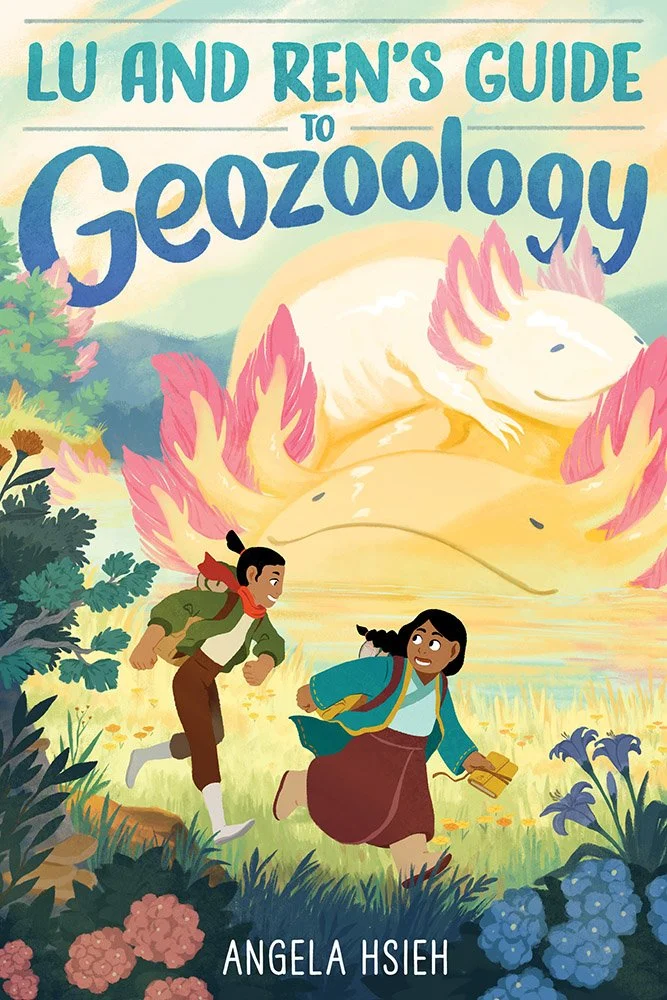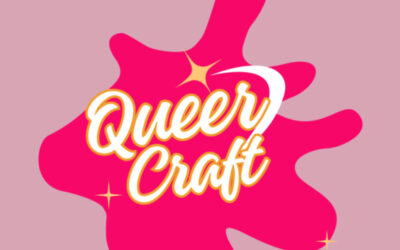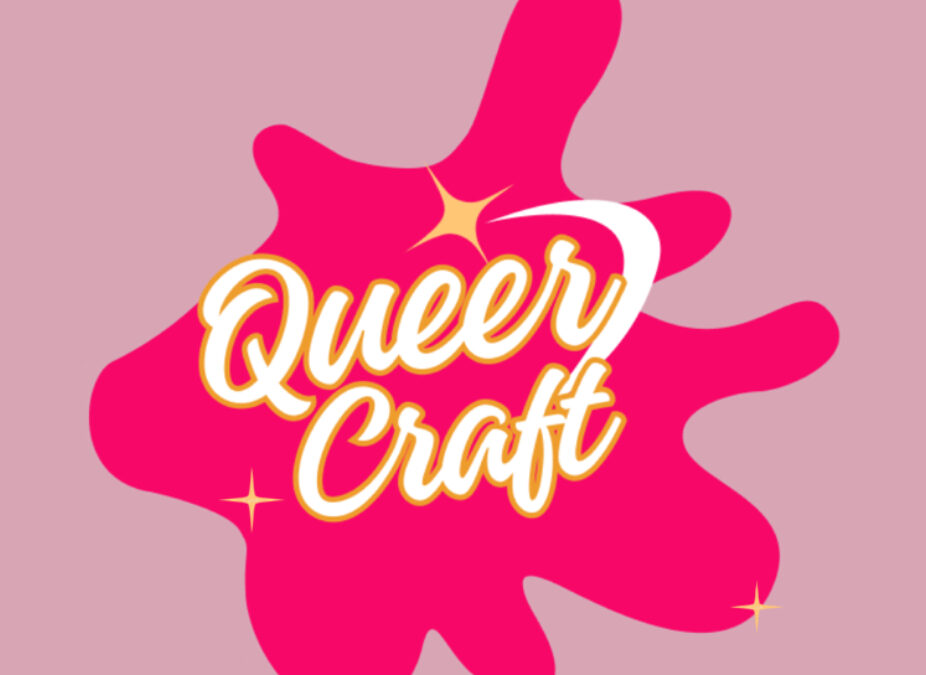Angela Hsieh is a Taiwanese American author and illustrator whose choices are mostly explained by her love of goofy animals, real and fantastical. Her life experiences include firefighter-carrying a sedated bear cub and catching a belligerent wallaby. Angela’s debut graphic novel, Lu and Ren’s Guide to Geozoology, received a starred review from Booklist and was chosen as a Junior Library Guild Gold Standard Selection. She also illustrated Antarctica: The Melting Continent, a critically acclaimed nonfiction book about real-life scientists and explorers.
I had the opportunity to interview Angela, which you can read below.
First of all, welcome to Geeks OUT! Could you tell us a little about yourself?
Thank you for having me! I’m Angela Hsieh, writer and illustrator of the middle grade fantasy graphic novel Lu and Ren’s Guide to Geozoology, which came out in May of this year! You may also know my work from the comics and illustrations I make with NPR or the New York Times, or the one time I designed and illustrated for a Times Square billboard for Hidden Brain. I have 1.5 cats.
What can you tell us about your latest project, Lu and Ren’s Guide to Geozoology? What was the inspiration for it?
Lu and Ren’s Guide to Geozoology is a story about two girls, Lu and Ren, traveling across a land full of geofauna (giant animals that form parts of the landscape) in search of Lu’s missing grandmother, a renowned geozoologist (someone who studies geofauna) who disappeared on a research trip. It explores friendship, adventure, family expectations, and language barriers. It’s about the connections we form with the people and the world around us.
This book was inspired by a variety of things: my love of animals and nature, my relationship with my grandparents, and my experience growing up Taiwanese American. And Pokémon. I just love a travel story filled with magical creatures, you know?
As a creative, what drew you to the art of storytelling, especially graphic novels/comics?
I share a common origin story with a lot of comics artists in that I read a lot of manga and comics and watched a lot of animated films growing up. I also read a ton of prose novels. I’d sometimes get in trouble for staying up too late reading. I just really wanted to know what happened next! I thought—and still think—it was so cool that someone could make something that was so immersive that someone else could lose themselves in it.
I try to find a medium that will serve the story I’m trying to tell. One of the things that pulls me towards comics again and again is the way it can play with pacing and the passage of time across panels or pages. The surprise that a well-planned page turn can deliver is one of those unique features of comics that I love working with. For Lu and Ren’s Guide to Geozoology, I wanted to get as close as possible to the feeling you get when you come across a breathtaking vista after a long, arduous hike and see the splendor of nature laid out before you. Comics felt like the perfect medium for that.
How would you describe your creative process?
The most mysterious (and exciting!) part of the process, even to me, is coming up with The Idea that can withstand the 3-4 years I’ll be working on it. I’m not sure how to describe it, or even how it works. I just know I need to let an idea stew for a long time in my head before committing to it. I’ll just let it simmer in the back of my mind next to all the other half-formed ideas. Sometimes they bump into each other and combine to make a more complex narrative.
I’m a plotter, which works great for a graphic novelist. For those unfamiliar with the graphic novel traditional publishing space, graphic novels are usually queried with a detailed synopsis and 10-20 sample pages rather than a fully drawn book. So I had to have a detailed synopsis from the start. Despite having the whole book outlined before writing the script, there’s still room for the characters to surprise me as I write.
There are quite a few checkpoints during the graphic novel process. Because drawing the pages takes so long, you ideally want to get the story down pat before you start drawing. (It took me four months to write the script and two full years to draw the book.) Think of how inefficient, not to mention frustrating, it would be if you had to throw out and completely redraw half of your 200-page book because you made changes to the story. There were a round of edits after every stage: synopsis, script, thumbnails, pencils/sketches, and colors. The biggest story edits happened at the beginning of the process, during synopsis and script. By the time I got to pencils, edits were fairly minor, mostly for clarity and flow. By the time I got to colors, edits came in the form of small details such as missing backpack straps or two left hands.
That’s a very bare-bones version of how I work. If you’re interested in a more in-depth walkthrough of my drawing process, I give a more detailed description of how I go from an idea to a graphic novel in this interview with Kids Comics Unite.
What are some of your favorite elements of writing/illustrating? What do you consider some of the most frustrating and/or difficult?
My favorite part is that ineffable moment when an idea just clicks. It always comes at unexpected times, too: while sitting in a car, for example, or during an unrelated conversation with a friend. It’s hard to pinpoint, and it’s hard to describe, and it’s pretty much impossible to do it on purpose.
To me, the most difficult part is actually completing the thing. Those moments of bright inspiration and subsequent periods of intense productivity are few and far between. The rest is a grind to the finish line. I wish I were one of those artists that loves every step of process, but alas, I am not. Sometimes, you just have to get the thing done.
It would be remiss of me not to mention that the most frustrating part of releasing a book into the world wasn’t any of the actual making of the book; it was trying to get the word out about it. I’m exhausted! I can’t wait to sit down and make my next book instead of talking about the previous one.

As a creative, who or what would you say are some of your greatest creative influences and/or sources of inspiration in general?
Animals, the natural world, and science are my biggest sources of inspiration. There’s so much to learn about and learn from the world around us. Animated films like Song of the Sea, Millennium Actress, and many made by Studio Ghibli have imprinted on my psyche from the first time I watched them. I’m also wonderfully fortunate to be surrounded by friends and peers who’re incredible artists, too, and the art they share is a constant source of inspiration.
Aside from your work, what are some things you would want readers to know about you?
I’m a pretty darn good baker. I’ve kept my sourdough starter alive since 2020. It still contributes focaccia to our household. I made my own caviolith-shaped cake for my book launch. (It was carrot cake.) If I were a contestant on the Great British Bake Off, my persona would be “boozy foul-mouthed Asian grandma” and my catchphrase would be “not too sweet!”
What’s a question you haven’t been asked yet but that you wish you were asked (as well as the answer to that question)?
I can’t stop thinking about the question a fellow graphic novelist asked me, which is: which geofauna would smell the best? The answer is cavioliths. They’d smell like damp earth and musk and greenery. And when they get rained on, they wouldn’t smell like wet dog.
What advice might you have to give for aspiring storytellers out there?
Take breaks. Find hobbies and interests that aren’t directly related to writing or drawing; they’ll feed your art. Make friends from all walks of life, not only artists; they’ll give you much-needed perspective. Make friends who are artists: they’ll understand your struggles.
Are there any other projects you are working on and at liberty to speak about?
Lu and Ren’s Guide to Geozoology was the first in a two-book deal, so I’m working on a second graphic novel with HarperCollins! It won’t be a sequel, but it’ll be another middle grade fantasy. I can’t wait to share it with everyone.
Finally, what books/authors would you recommend to the readers of Geeks OUT?
If you haven’t read The Prince and the Dressmaker by Jen Wang, you absolutely need to get your hands on a copy! Set in turn-of-the-20th-century Paris, it’s about a prince who’s a drag queen by night and the talented tailor who makes his dreams come true—but because the prince’s identity must be kept a secret, this comes at the cost of the tailor’s own dreams. It’s a sweet story with a perfect fairy-tale ending.
I’ll throw in a nonfiction one as well: Why Fish Don’t Exist by Lulu Miller. It’s a blend between memoir and history, about the author trying to make meaning out of her own life and looking to the story of a 20th-century taxonomist to help her through a dark time. Trust me on this one. It goes to some dark places but comes out the other side stubbornly hopeful, which is something we could do with right now.






0 Comments